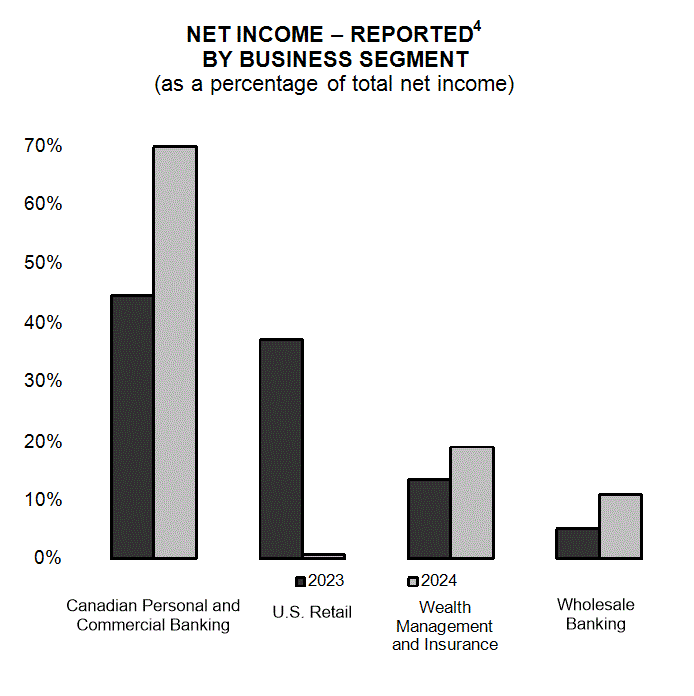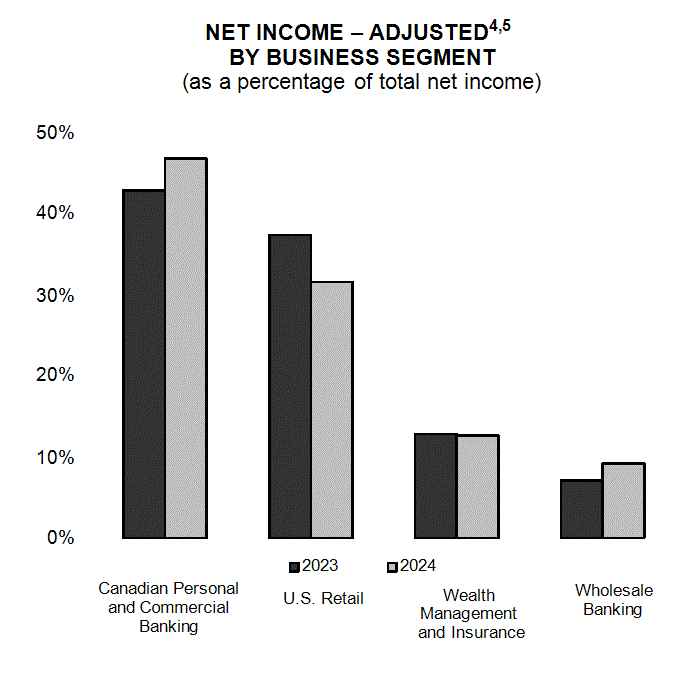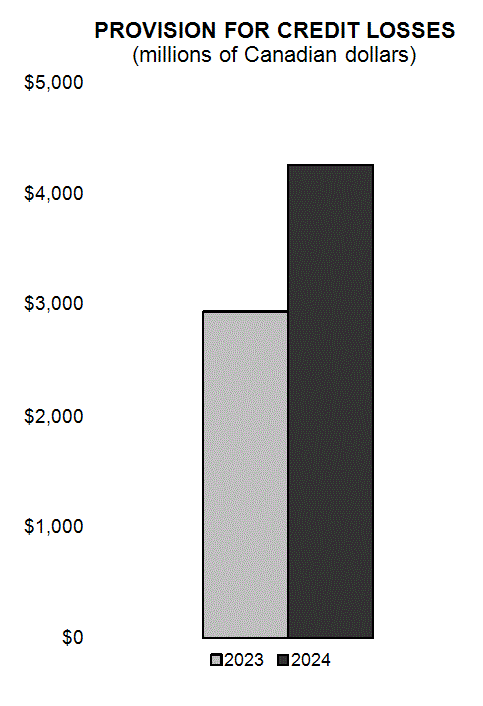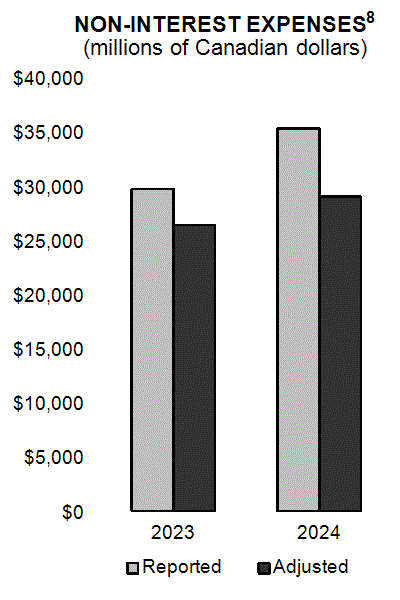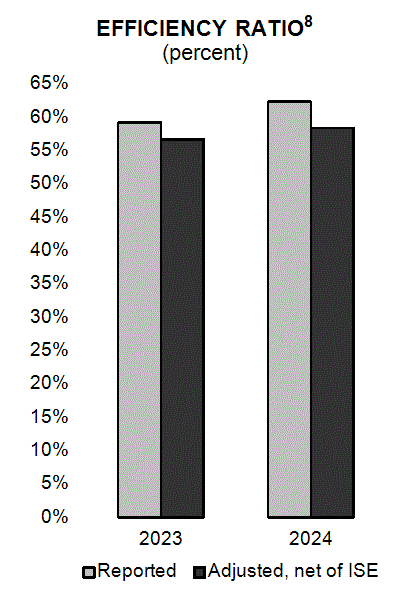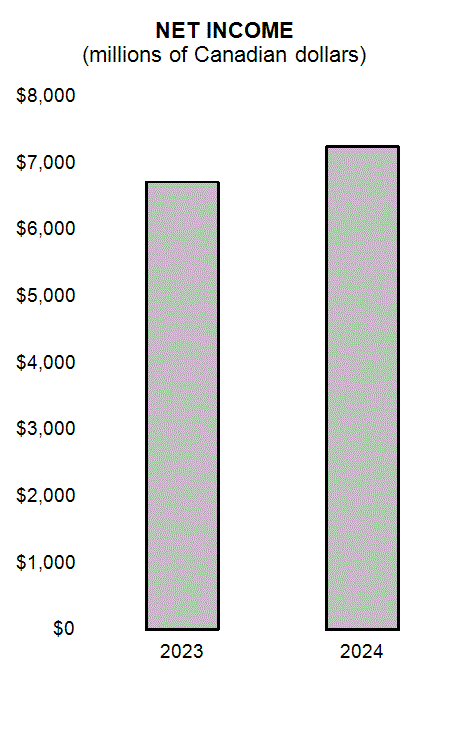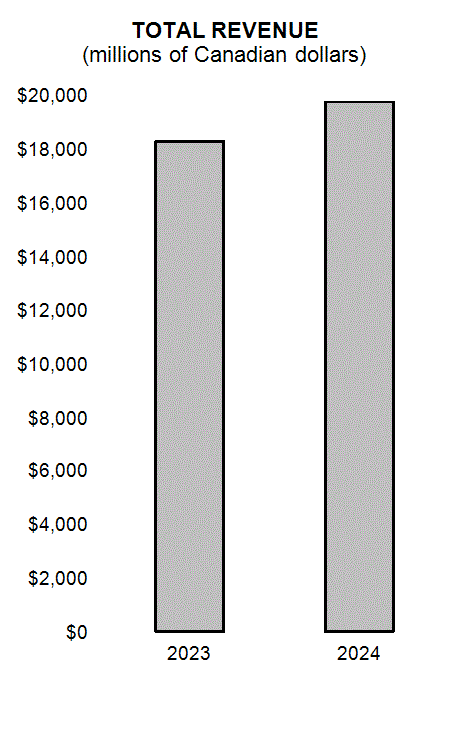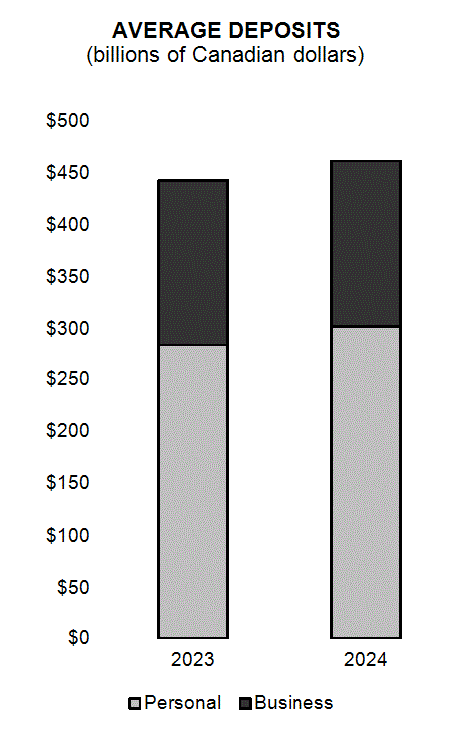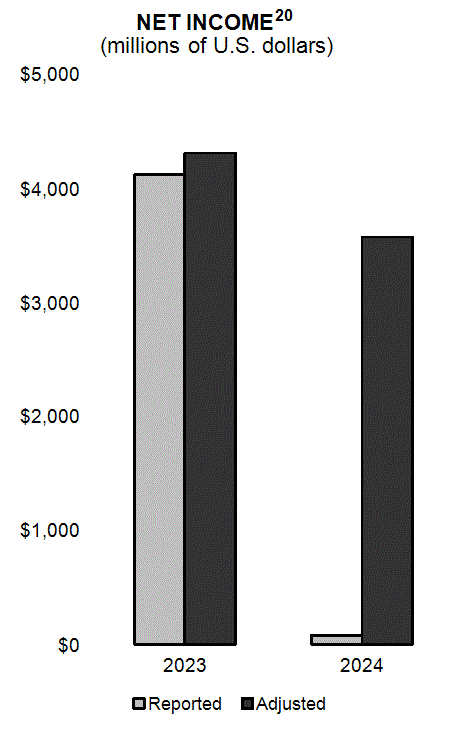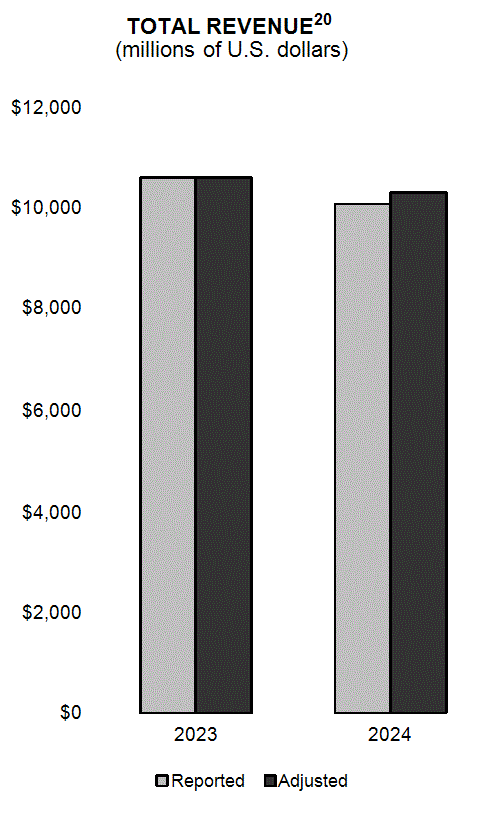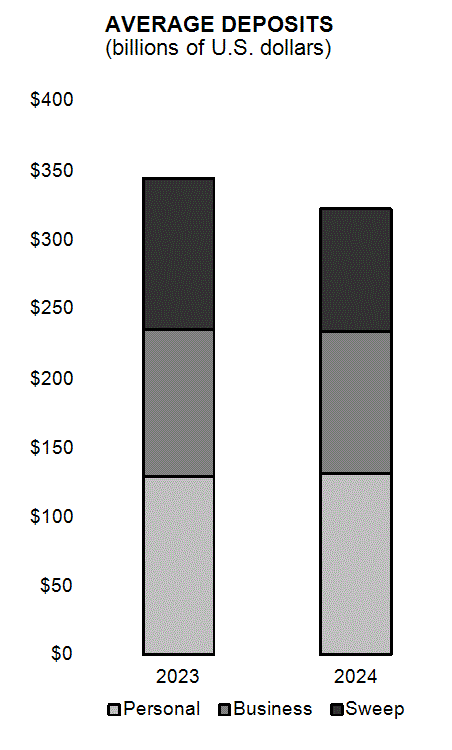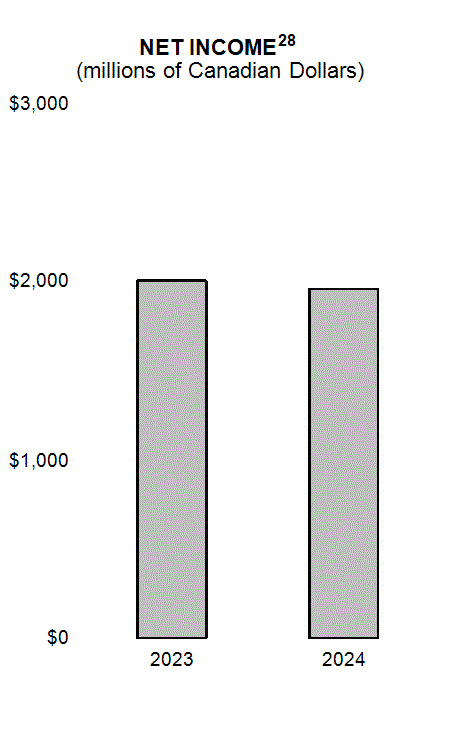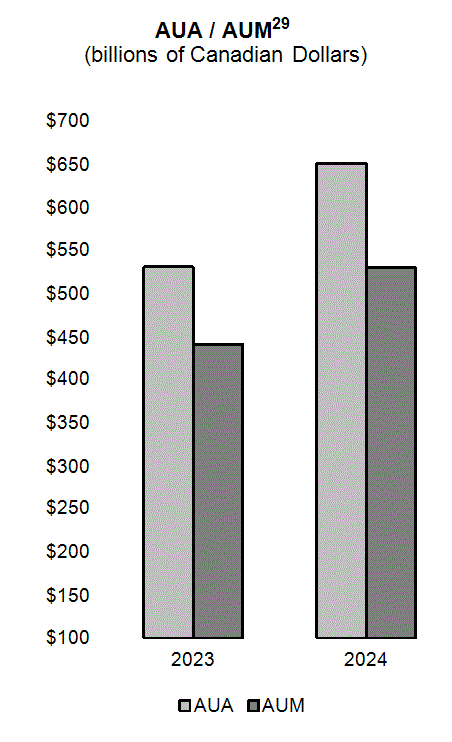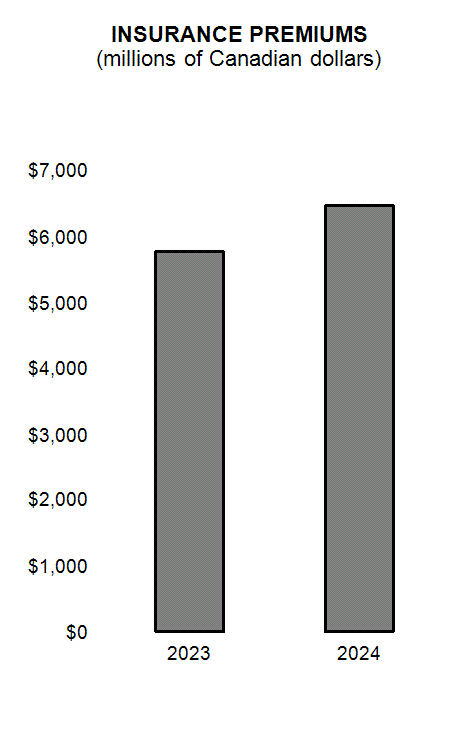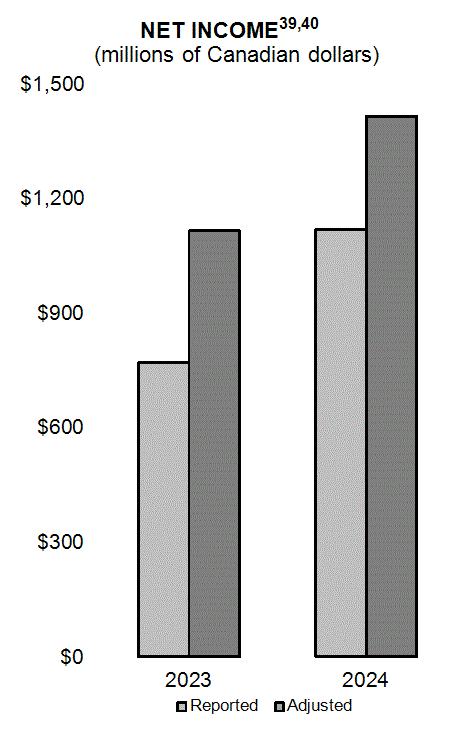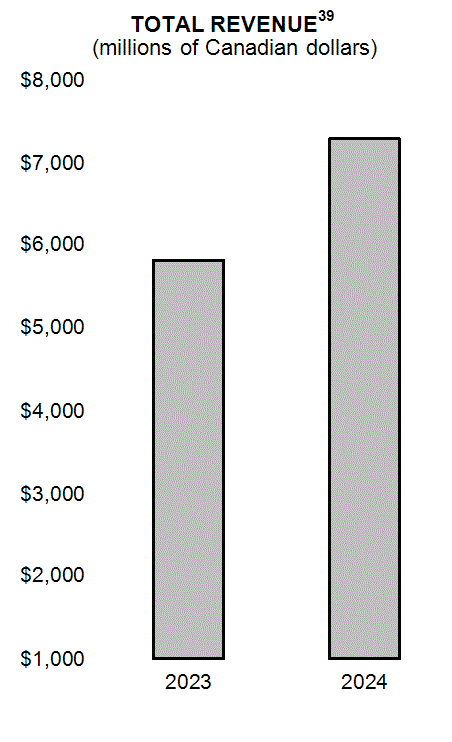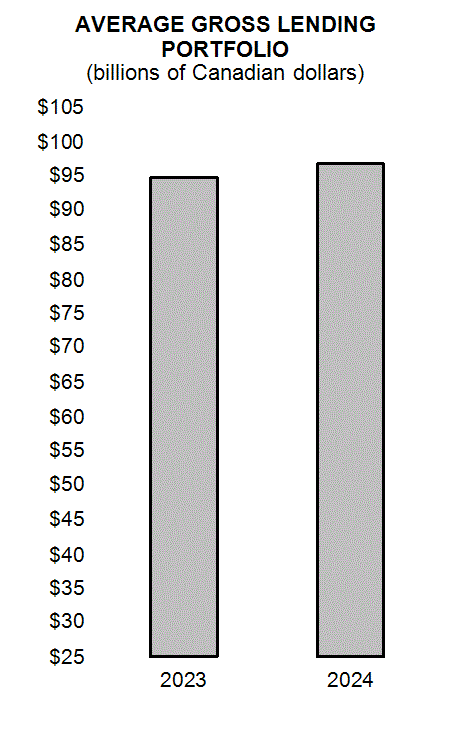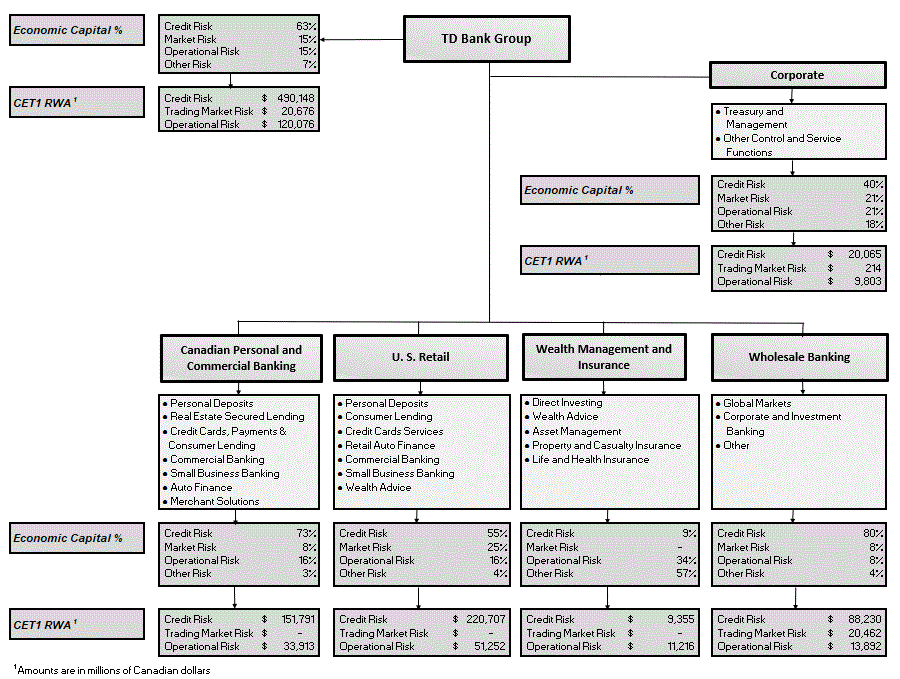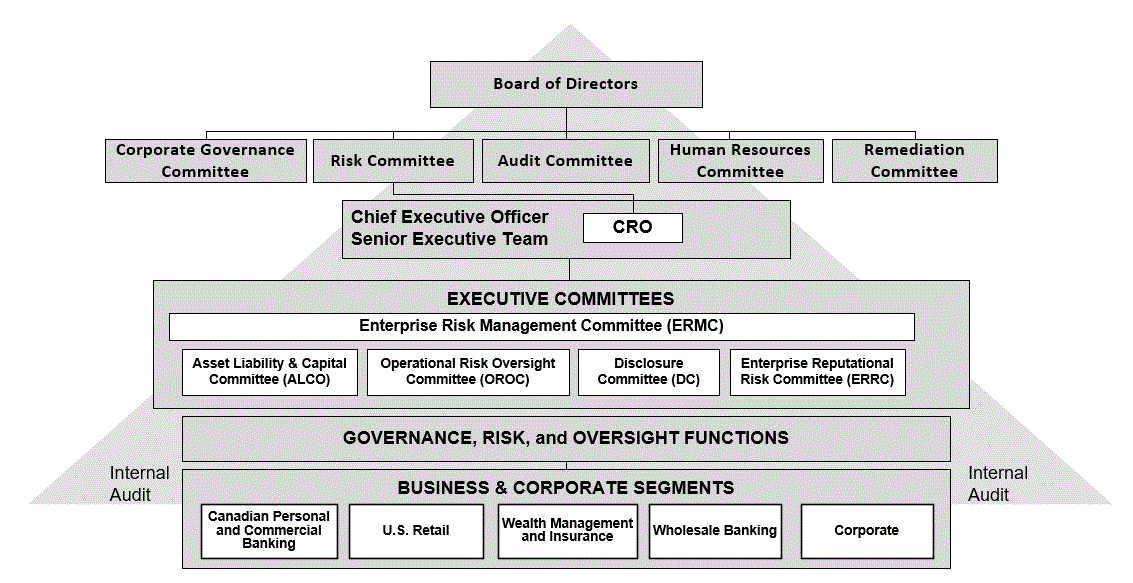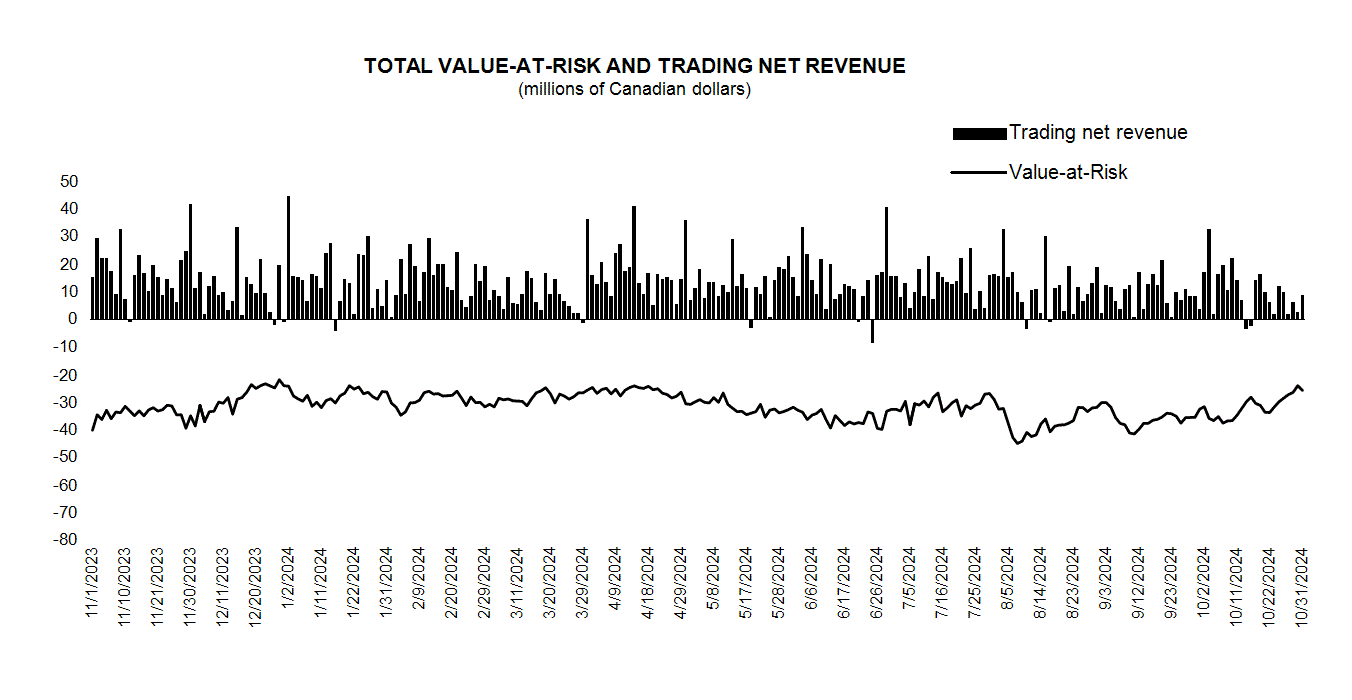TD BANK GROUP • 2024 ANNUAL REPORT • MANAGEMENT’S DISCUSSION AND ANALYSIS
Page 63
Bank’s brand and reputation, as well as the limitations
imposed on the Bank’s U.S. businesses by
the Global Resolution, may adversely affect: (i)
the Bank’s ability
to attract and retain customers and employees;
(ii) the willingness of key third parties,
including service providers, vendors, financial
counterparties, government
agencies, and
other market participants, to transact
with the Bank; and (iii) the willingness of
investors to retain Bank securities in their
investment portfolios or to
acquire Bank securities. See also “Level of
Competition, Shifts in Consumer Attitudes,
and Disruptive Technology”, “Ability to Attract, Develop, and Retain Key
Talent”, “Third Party Risk”, and “Value and Market Price of our Common Shares and other Securities”,
below.
The value and trading price of the Bank’s securities
could be negatively affected by a number of
factors related to the terms of the Global Resolution
and the
remediation of the issues resulting in the investigations,
including if: (i) the Bank fails to satisfy
the terms of the Global Resolution (including
the requirement to
remediate the Bank’s U.S. BSA/AML program)
in a manner that is acceptable to the regulators
and/or the monitors; (ii) the impact of the non-monetary
penalties
imposed on the Bank are more negative
or sustained than anticipated, including
if the limitations imposed on the Bank’s
U.S. businesses weaken the Bank’s U.S.
franchise; (iii) the Bank becomes subject
to further prosecution or financial penalties
(which may occur if the Bank fails to comply
with the terms of the plea
agreements with the DOJ during the five-year
term of probation); (iv) the Bank’s or U.S. Bank’s
former or current directors, officers or employees
become subject
to civil or criminal investigations or enforcement
proceedings in relation to the Bank’s U.S. BSA/AML
program; (v) the impact on the Bank’s brand
and reputation is
more negative or sustained than anticipated;
and/or (vi) if any of the risks described
in this “Global Resolution of the Investigations
into the Bank’s U.S. BSA/AML
Program”
section materializes. The foregoing factors
may also lead to rating agencies further
downgrading the Bank’s credit ratings and outlooks.
See also “Value
and Market Price of our Common Shares
and other Securities” and “Downgrade,
Suspension or Withdrawal of Ratings Assigned
by any Rating Agency”, below.
See also the risks described under “Regulatory
Oversight and Compliance”.
Regulatory Oversight and Compliance
The Bank and its businesses are subject
to extensive regulation and oversight by
a number of different governments, regulators and
self-regulatory organizations
(collectively, “Bank regulators”) around the world. Regulatory and
legislative changes and changes in the
Bank’s regulators’ expectations occur in all jurisdictions
in
which the Bank operates.
Bank regulators around the world have demonstrated
an increased focus on capital,
liquidity,
and interest rate risk
(IRR) risk management; consumer protection;
data management;
conduct risk and internal risk and control
frameworks across the three lines of defense;
foreign interference; and financial crime
including
money laundering, terrorist financing and economic
sanctions risks and threats. There is heightened
focus by Bank regulators globally on the impact
of interest
rates and inflation on customers, as well as
on the Bank’s operations and its management
and oversight of risks associated with these
matters. In addition, these
risks continue to rapidly evolve, as a
result of new or emerging threats, including
geopolitical and those associated with use
of new, emerging and interrelated
technologies, artificial intelligence (AI), machine
learning, models and decision-making tools.
The content and application of laws, rules and
regulations affecting financial services institutions
may sometimes vary according to factors such
as the size of the
institution,
the jurisdiction in which it is organized or
operates, and other criteria. There can also
be significant differences in the ways that
similar regulatory
initiatives affecting the financial services industry are
implemented in Canada, the United States
and other countries and regions in
which the Bank does business.
For example, when adopting rules that are
intended to implement a global regulatory
standard, a national regulator may introduce
additional or more restrictive
requirements. Furthermore, some of the Bank’s regulators
have the discretion to impose additional requirements,
standards or guidance regarding the Bank’s risk,
capital and liquidity management, or other
matters within their regulatory scope, and in
some cases the Bank may be prohibited by
law from publicly disclosing
such additional requirements, standards or guidance.
Compliance with these additional requirements,
standards or guidance may increase the
Bank’s compliance
and operational costs, and could adversely
affect the Bank’s businesses and results of operations.
Regulators have indicated the potential for escalating
consequences for banks that do not timely
resolve open issues or have repeat issues.
Furthermore, delays in satisfying one regulatory
requirement could affect
the Bank’s progress on others. Failure to satisfy
regulatory requirements on a timely basis
could result in additional fines, penalties, business
restrictions,
limitations on subsidiary capital distributions,
increased capital or liquidity requirements,
enforcement actions, increased regulatory oversight,
and other adverse
consequences, which could be significant.
Compliance with any consent orders or
regulatory proceedings, as well as the implementation
of their requirements,
may increase the Bank’s costs, require the Bank
to reallocate resources away from managing
its business, negatively impact the Bank’s capital
and credit ratings,
cash flows and funding costs, require the Bank
to undergo significant changes to its business,
operations, products and services, and risk
management practices,
damage the Bank’s reputation, and subject the
Bank to other adverse consequences, including
additional financial penalties, restrictions
and limitations.
The Bank monitors and evaluates the potential
impact of applicable regulatory developments
(including enacted and proposed rules,
standards, public
enforcement actions, consent orders, and
regulatory guidance). However, while the Bank devotes
substantial compliance, legal, and operational
business
resources to facilitate compliance with these
developments by their respective effective dates,
and also to the consideration of other Bank
regulator expectations, it
is possible that: (i) the Bank may not be
able to accurately predict the impact of
regulatory developments, or the interpretation
or focus of enforcement actions
taken by governments, regulators and courts,
(ii) the Bank may not be able to develop
or enhance the platforms, technology, or operational procedures
and
frameworks necessary to comply with, or adapt
to, such rules or expectations in advance
of or by their effective dates; or (iii) regulators and
other parties could
challenge the Bank’s compliance. Also, it may be
determined that the Bank has not adequately, completely or addressed
on a timely basis regulatory
developments or other regulatory requirements,
including enforcement actions, to which it
is subject, in a manner which meets Bank regulator
expectations.
At any given time, the Bank is subject
to a significant number of legal and regulatory
proceedings and to numerous governmental
and regulatory examinations.
Additionally, the Bank has been subject to regulatory enforcement
proceedings and has entered into
settlement agreements with Bank regulators,
and the Bank
may continue to face a greater number or
wider scope of investigations, enforcement
actions and litigation. The Bank could also
be subject to negative regulatory
evaluation or examination findings not only
because of violations of laws and regulations,
but also due to failures, as determined by
its regulators, to have
adequate policies and procedures, or to remedy
deficiencies on a timely basis. Regulatory
and legislative changes and changes in expectations
will continue to
increase the Bank’s compliance and operational
risks and costs. In addition, legislative and
regulatory initiatives could require
the Bank to make significant
modifications to its operations in the relevant
countries or regions in order to comply
with those requirements. This could result in increased
costs as well as
adversely affect the Bank’s businesses and results of operations.
In the future, the Bank may be subject to additional
regulatory enforcement proceedings or
enter into future settlement arrangements
with Bank regulators, and it
may incur fines, penalties,
judgments or business restrictions not
in its favour associated with regulatory
non-compliance, all of which could also
lead to negative
impacts on the Bank’s financial performance, operational
changes including restrictions on offering certain
products or services or on operating in
certain
jurisdictions, and its reputation.

